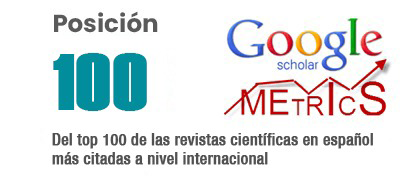Distance education: a methodological strategy at the higher level
DOI:
https://doi.org/10.62452/ftx19g18Keywords:
Distance Education, virtual university, academic community, educational networksAbstract
The article analyzes Distance Education as part of a complex educational system, and therefore, as any system; its interrelated and interdependent components. This implies that a change in one component of the system will affect the others, thus, if a means of communication is changed or added, it will affect the entire instructional design, the nature of the interaction and the learning possibilities offered by the educational context. In this sense, educational networks should be, then, spaces for multiple conversations mediated by various instruments such as school teaching, the media, electronic networks, and school organizations. The result of this construction of varied, multiple information, of utilitarian and cultural purposes, will have to be a self-conscious citizen, possessor of professional skills and habits of coexistence, worker and capable of creative leisure, respectfully related to others and its environment.
Downloads
References
Ausubel, D. P. (2000). The acquisition and retention of knowledge: a cognitive view. Kluwer Academic Publishers.
Barrantes Echavarría, R. (1992). Educación a Distancia. Editorial Universidad Estatal a Distancia.
Moore, M. G. (1989). Three types of Interaction. En: The American Journal of Distance Education, 3(2).
Organización de las Naciones Unidas para la Educación, la Ciencia y la Cultura. (2004). La Educación superior virtual en América Latina y el Caribe. UNESCO. http://www.iesalc.unesco.org.ve/index.php?option=com_fabrik&view=details&formid=2&rowid=43&lang=es
Rama, C. (2014). La virtualización universitaria en América Latina. RUSC. Universities and Knowledge Society Journal, 11(3), 33-43.
Real Academia Española. (2006). Diccionario de la Lengua Española. Espasa Calpe.
Sarramona, J. (1975). Tecnología de la enseñanza a distancia. Ediciones CEAC.
Yong Castillo, E., Nagles García, N., Mejía Corredor, C., & Chaparro Malaver, C. E. (2017). Evolución de la educación superior a distancia: desafíos y oportunidades para su gestión. Revista Virtual Universidad Católica del Norte, 50, 81-105.
Yong, E., & Bedoya, D. (2016). De la educación tradicional a la educación mediada por TIC: Los procesos de enseñanza aprendizaje en el siglo XXI. Virtual Educa. http://acceso.virtualeduca.red/documentos/ponencias/puerto-rico/1061-184b.pdf
Downloads
Published
Issue
Section
License
Copyright (c) 2020 Luzmila de Sánchez (Autor/a)

This work is licensed under a Creative Commons Attribution-NonCommercial-ShareAlike 4.0 International License.
Authors who publish in Revista Metropolitana de Ciencias Aplicadas (REMCA), agree to the following terms:
1. Copyright
Authors retain unrestricted copyright to their work. Authors grant the journal the right of first publication. To this end, they assign the journal non-exclusive exploitation rights (reproduction, distribution, public communication, and transformation). Authors may enter into additional agreements for the non-exclusive distribution of the version of the work published in the journal, provided that acknowledgment of its initial publication in this journal is given.
© The authors.
2. License
The articles are published in the journal under the Creative Commons Attribution-NonCommercial-ShareAlike 4.0 International License (CC BY-NC-SA 4.0). The terms can be found at: https://creativecommons.org/licenses/by-nc-sa/4.0/deed.en
This license allows:
- Sharing: Copying and redistributing the material in any medium or format.
- Adapting: Remixing, transforming, and building upon the material.
Under the following terms:
- Attribution: You must give appropriate credit, provide a link to the license, and indicate if any changes were made. You may do this in any reasonable manner, but not in any way that suggests the licensor endorses or sponsors your use.
- NonCommercial: You may not use the material for commercial purposes.
- ShareAlike: If you remix, transform, or build upon the material, you must distribute your creation under the same license as the original work.
There are no additional restrictions. You may not apply legal terms or technological measures that legally restrict others from doing anything the license permits.




